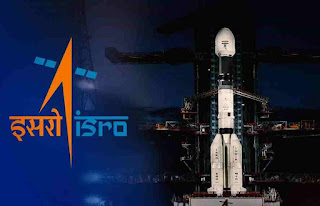The Indian Space Research Organisation (ISRO) has been at the forefront of space technology development in India since its establishment in 1969. ISRO's primary objective is to advance space technology and leverage its applications for national development. Over the years, ISRO has achieved significant milestones in developing indigenous technologies for satellite communication, remote sensing, navigation, and space exploration. Key ISRO Technologies and Their Applications Launch Vehicles: ISRO has developed a range of launch vehicles, including the Polar Satellite Launch Vehicle (PSLV) and the Geosynchronous Satellite Launch Vehicle (GSLV) and the latest LVM3, capable of placing various satellites into different orbits. These vehicles have enabled India to achieve self-reliance in launching its satellites and have also been used to launch satellites for other countries, demonstrating their reliability and cost-effectiveness. The development of the Small Satellite Launch Vehicle (SSLV) and the Human Rated Launch Vehicle (HRLV) for the Gaganyaan mission showcases ISRO's continuous efforts in this domain. Satellite Systems: ISRO operates two major satellite systems.Indian National Satellite (INSAT) system: This is one of the largest domestic communication satellite systems in the Asia-Pacific region. INSAT satellites provide crucial services for television broadcasting, telecommunications, weather forecasting, disaster management, and education. For instance, INSAT-1B, launched in 1983, revolutionized India's communication sector. The GSAT series further supports digital audio, data, and video transmission. As of January 2025, 18 GSAT satellites are operational. Indian Remote Sensing (IRS) satellites: This system provides vital data for monitoring and managing natural resources, urban planning, agriculture, and environmental monitoring. The IRS series began with IRS-1A in 1988, and subsequent satellites like Ocean sat, CARTOSAT series, RISAT, and the EOS series have enhanced Earth observation capabilities with optical, microwave, and hyperspectral instruments. Navigation Systems: ISRO has developed indigenous satellite navigation systems. GAGAN (GPS Aided GEO Augmented Navigation This system provides enhanced accuracy for GPS signals over the Indian region, crucial for aviation safety and other applications. NavI C (Navigation with Indian Constellation): Also known as the Indian Regional Navigation Satellite System (IRNSS), NavI C is an independent regional navigation satellite system designed to provide accurate positioning services in India and its surrounding areas. Space Exploration Technologies: ISRO has made remarkable strides in planetary exploration Chandra yaan Missions India's lunar missions, Chandrayaan-1 (2008) and Chandrayaan-2 (2019), have significantly contributed to our understanding of the Moon. Chandrayaan-1 was the first to confirm the presence of water molecules on the lunar surface. Chandrayaan-3 achieved a historic soft landing on the Moon's south pole in August 2023, making India the first country to do so. Mars Orbiter Mission (Mangalyaan) Launched in 2013, Mangalyaan made India the first Asian country to reach Mars orbit and the first globally to achieve this in its maiden attempt. The mission studied the Martian surface, atmosphere, and mineral composition. Aditya-L1 Launched in September 2023, Aditya-L1 is India's first space-based solar observatory, positioned at the Lagrange point L1 to study the Sun's outer atmosphere. Spin-off Technologies: ISRO's research and development have also led to the development of technologies with applications beyond space, benefiting various sectors such as medicine, materials science, and information technology. New Space India Ltd. (NSIL), ISRO's commercial arm, facilitates the transfer of these technologies to industries. Future Directions ISRO continues to advance its technological capabilities with several upcoming missions and developmentsCagayan India's first human spaceflight program aims to send Indian astronauts into space. Uncrewed test flights (Gaganyaan-1 and Gaganyaan-2) are planned for 2025, with the crewed mission (Gaganyaan-3) targeted for early 2026. NISAR (NASA-ISRO SAR) A joint project with NASA to develop and launch a dual-frequency synthetic aperture radar satellite for Earth observation, slated for launch around June 2025. Chandrayaan A planned lunar sample-return mission, expected around 2027-28. Shukrayaan A planned orbiter mission to study the atmosphere of Venus, targeted for March 2028.
Bharatiya Antariksha Station India's planned space station, envisioned to be operational between 2028 and 2035.
Reusable Launch Vehicles (RLV): ISRO is actively developing reusable launch vehicle technologies to reduce the cost of space access. Successful autonomous landing tests (RLV LEX) have been conducted.
Semi-cryogenic Engine: Development of a semi-cryogenic engine to enhance the payload capacity of future launch vehicles.
Space Docking Experiment (SPADEX): Recent successful demonstrations of in-orbit docking and undocking technologies are crucial for future missions, including the space station and lunar sample return.
Through continuous innovation and strategic development, ISRO remains a significant player in the global space arena, contributing to scientific advancements and addressing national needs through space-based technologies. Sources and related content.





No comments:
Post a Comment